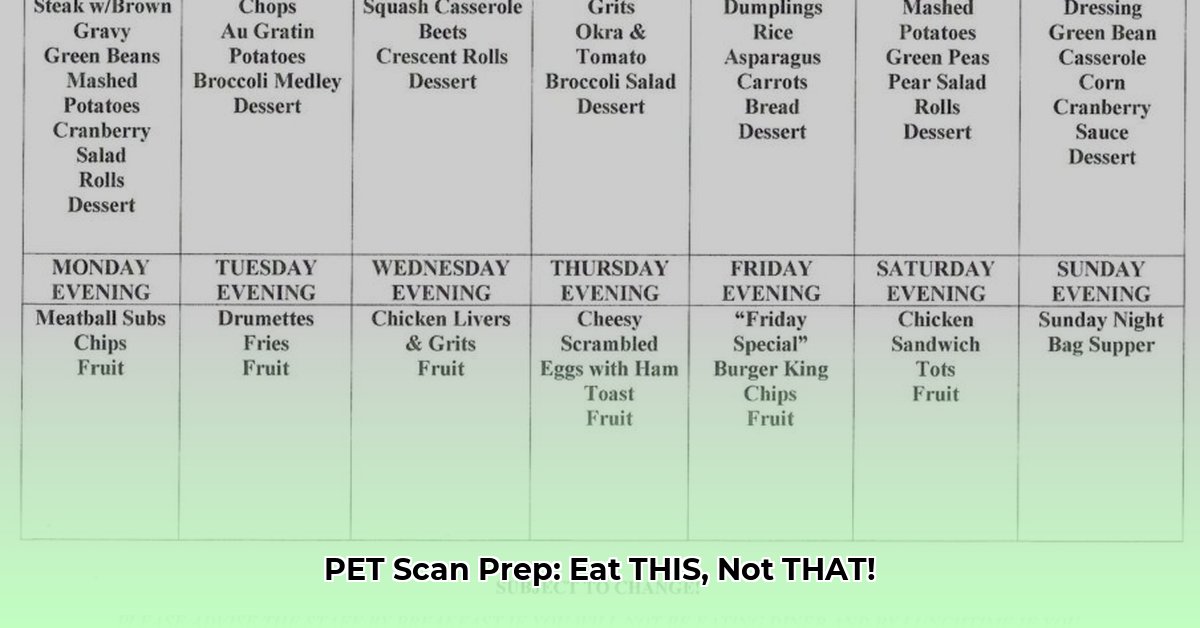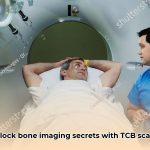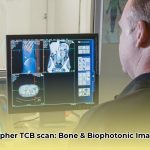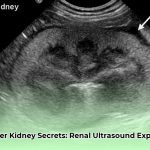Getting a PET scan can feel a bit overwhelming, but proper preparation, especially regarding your diet, can significantly impact the clarity and accuracy of the results. This guide provides clear, step-by-step instructions and sample menus to help you navigate the pre-PET scan diet with confidence.
Understanding the Importance of the Pre-PET Scan Diet
A Positron Emission Tomography (PET) scan uses a small amount of radioactive material, called a tracer, to create detailed images of your body’s internal processes. The type of tracer used and the specific metabolic activity being investigated dictate the dietary guidelines. Following the prescribed diet helps optimize the tracer’s uptake and minimize interference, ensuring the clearest possible images for accurate diagnosis and treatment planning.
Types of PET Scans & Their Dietary Needs
Different PET scans have varying dietary requirements. This guide focuses on two common types:
FDG-PET Scan
This scan uses a glucose-based tracer (FDG) to assess metabolic activity, often used in cancer diagnosis and staging. Because of this, a low-carbohydrate, high-protein diet is essential in the 24 hours leading up to the scan. This reduces your body’s glucose levels, allowing the FDG to be more readily taken up by the target tissues and enhancing image clarity.
Rubidium PET Scan
Rubidium PET scans are generally used for cardiac imaging, assessing blood flow to the heart muscle. The dietary preparation for these is usually simpler, typically involving a water-only fast for a few hours before the scan.
24-Hour Pre-FDG-PET Scan Diet: A Step-by-Step Guide
Step 1: Embrace the Allowed Foods
- Protein: Lean meats (chicken, fish, turkey, beef, lamb), eggs, tofu, unsweetened peanut butter (check labels!), nuts, and seeds.
- Non-Starchy Vegetables: Leafy greens (spinach, kale, lettuce), broccoli, asparagus, mushrooms, celery, cucumbers, green beans.
- Healthy Fats: Olive oil, butter, margarine (in moderation).
- Dairy (Limited): Hard cheeses (cheddar, Swiss, Colby), small amounts of plain, unsweetened yogurt and cottage cheese.
- Beverages: Primarily water. Some doctors may allow sugar-free drinks, but always confirm.
Step 2: Avoid the Restricted Foods
- Sugary Foods & Drinks: Candy, desserts, fruit, juice, sweetened beverages.
- Starchy Vegetables: Potatoes, corn, peas, carrots, beets.
- Grains: Bread, pasta, rice, cereal, and other grain products.
- Most Dairy: Milk, sweetened yogurt, and cheeses.
- Processed Foods: Often high in hidden sugars and carbs.
- Alcohol & Caffeine: These can interfere with the scan.
Step 3: 24-Hour Sample Meal Plan (FDG-PET)
This is a sample menu; adjust it to your preferences while adhering to the guidelines:
| Meal | Example | Vegetarian/Vegan Option |
|---|---|---|
| Breakfast | Scrambled eggs with spinach and a side of avocado | Tofu scramble with spinach and avocado |
| Lunch | Grilled chicken salad with olive oil and a sprinkle of nuts | Salad with grilled tofu, mixed greens, and a light vinaigrette |
| Dinner | Baked salmon with steamed asparagus and a small pat of butter | Baked tofu with asparagus and a drizzle of olive oil |
| Snack | Handful of almonds or a few slices of cheese | Small bowl of edamame or a handful of pumpkin seeds |
Step 4: The Final Fast (FDG-PET)
For 4-6 hours before your FDG-PET scan, consume only water. No food, gum, coffee, mints – nothing but water. This is crucial for accurate results.
Pre-Rubidium PET Scan Diet
Typically, a water-only fast for a few hours before the scan is recommended. Your doctor will provide specific instructions.
Additional Considerations
- Hydration: Drink plenty of water throughout the prep process and after the scan.
- Diabetes: If you have diabetes, consult your doctor for personalized instructions.
- Medications: Inform your doctor about all medications, including over-the-counter drugs and supplements. Some may need adjustments.
- Strenuous Activity: Avoid intense exercise for 24 hours before the scan.
- Caffeine/Beta-Blockers/Calcium Channel Blockers: Discuss these with your doctor as they can impact the results.
Tips for Success
- Meal Prepping: Prepare meals in advance to make following the diet easier.
- Substitutions: Explore low-carb alternatives to your favorite foods.
FAQs
- What if I accidentally eat something I shouldn’t? Contact your doctor or the imaging center immediately for guidance.
- Can I chew gum? No, gum is not allowed before a PET scan.
Disclaimer: This information is for educational purposes only and is not a substitute for professional medical advice. Always consult with your physician or a qualified healthcare provider for personalized guidance before undergoing a PET scan.
- Hydro Extrusions USA Leads North American Aluminum Profile Solutions - December 28, 2025
- Hydro North America Leads Aluminum Extrusion Solutions Across Diverse Industries - December 27, 2025
- Hydro Extrusion North America Provides Custom Solutions Across Diverse - December 26, 2025
















